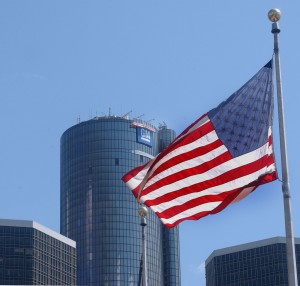
General Motors expanded its credit revolver by $2 billion to $14.5 billion to ensure it has enough cash to operate normally in tough times.
General Motors has put in place a bigger safety net to protect the company in the event of hard times or a catastrophic market downturn that cripples new car sales.
GM set up an unsecured $14.5 billion revolving credit facility consisting of a $10.5 billion five-year facility and a $4 billion three-year facility. The facility amends and extends GM’s existing $12.5 billion revolving credit facility and 44-different financial institutions subscribed to the new credit facility, GM’s top finance officer said.
“We believe this larger revolver, along with our $20 billion target cash, will provide appropriate liquidity to enable consistent investment in a downturn to generate strong results,” said Chuck Stevens, GM executive vice president and chief financial officer.
“In addition, we will also have the financial flexibility within the revolver for potential opportunities that may emerge to advance our strategic plan,” Stevens said.
(Buick confirms TDB report: shutting down Verano production. For more, Click Here.)
GM did not disclose the cost of the new credit facility. However, the company said its capital allocation framework included a goal of having $20 billion in cash on hand and available liquidity of $30 billion to $35 billion needed to withstand a severe economic downturn.
GM also said that the buy backs promised shareholders under the company’s common stock share repurchase program will continue to be funded with available free-cash-flow.
The 44 financial institutions that have agreed to participate in the credit facility from 13 countries participated in the broadly syndicated transaction, underscoring the global scope of GM’s operations.
(Click Here for details about GM moving truck production from Mexico to Michigan.)
The credit facility is also important because of the company’s recent history. In late 2008, the automaker nearly ran out of cash and required what amounted to an emergency loan from the U.S. Treasury Department to stay liquid.
The company’s finances were later re-organized under a bailout organized by the Obama administration. As part of the bailout, GM filed for bankruptcy in 2009. The painful 2009 bankruptcy continues to cast a shadow over the company’s standing with investors.
Moody’s Investors Service has already assigned a Baa3 rating to GM’s new credit facility, not affecting the company’s Ba1 senior unsecured rating.
(GM offering payouts to CUV owners over inaccurate mileage numbers. Click Here for the latest.)
“GM’s Baa3 credit facility rating and its Ba1 senior unsecured ratings are supported by the company’s increasingly competitive operations in North America, its strong position in the still-growing Chinese market, and the likelihood that it will achieve breakeven performance in Europe,” Moody’s explained in its Ratings Rationale report.
